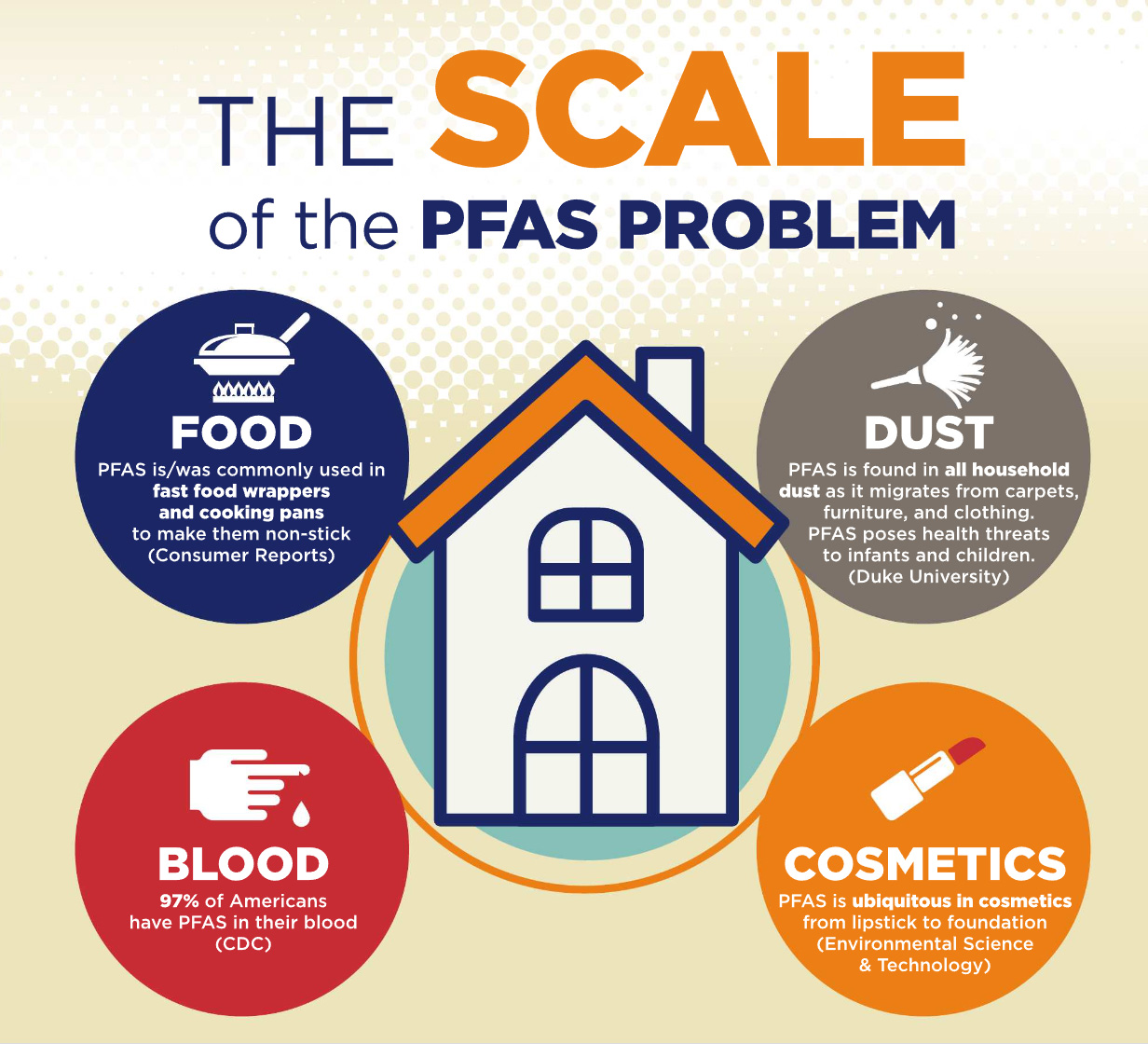Surprisingly, they return low profit margins for manufacturers
By TOD HARDIN
The societal cost of PFAS – also known as “forever chemicals” – exceeds $17 trillion across the global economy, according to a forthcoming report from Sweden-based NGO, ChemSec.
The findings also indicate that PFAS
chemicals provide extremely low ROI for their manufacturers, at just $4 billion
of profit annually – which might sound grand on the surface, but is paltry when
you consider that there are 12 manufacturers that account for most of the PFAS
produced worldwide.
“If you compare the profits that they make
and the cost to society – it’s ridiculous,” said Peter Pierrou, ChemSec’s
communications director, in an interview with The
Guardian.
PFAS – which stands for per- and polyfluoroalkyl substances – are a group of about 15,000 chemicals used in products that are used in the manufacture of endless products, many of which provide convenience and safety.
These include such things as firefighting foam,
medical devices, stain-resistant carpeting, waterproof clothing, non-stick
cookware, and the production of semiconductor chips that power technology.
Unfortunately, many of these “forever
chemicals” are linked to a number of health issues, including increased
incidence of cancer, liver and kidney disease, reproductive issues,
immunodeficiencies, and hormonal disruptions. They are often referred to as
“forever chemicals” because they do not naturally break down.
“What makes them such a threat is that they are biopersistent,” said Dr. Charlie Rolsky, Senior Scientist at the Shaw Institute in Blue Hill, Maine, and a renowned researcher on PFAS and other pollutants. “This means they remain in humans and wildlife indefinitely without breaking down. They also are bioaccumulative, which is a fancy way of saying that they build up inside of us at increasing rates. ”
ChemSec, producers of the report, is an NGO
that works with industry and policymakers to limit the use of toxic chemicals.
They produced the economic analysis with the goal of showing how the high cost
of PFAS is a burden taken on by governments that are forced to cover the costs
of cleaning up pollution and for the healthcare of individuals who suffer from
medical consequences related to exposure.
In addition to looking at economic impact,
ChemSec also broke down PFAS societal economic impact into four categories:
water and soil remediation, which are the most costly, as well as bio
monitoring and healthcare costs; while also classifying each chemical as
“essential” or “non-essential.”
The Guardian points out that those questions
are likely to become a focal point in the debate over the chemicals’ use in
upcoming years as proposed legislation in the EU would ban the chemicals except
for essential uses, and a law passed in Maine that goes into effect in 2030
takes a similar approach.
While industry claims most PFAS are
essential, ChemSec’s report says that only 8% are.
Pierrou told The Guardian: “There are so many
industry voices that are opposing the PFAS ban and they are using the
‘essential use’ concept as an excuse: ‘We cannot ban PFAS or everything will
sink and go under.’ The parts that are ‘essential’ are really minor and there
are so many uses we could do without.”
What motivated this report? In the end, money
talks. Just as consumers have the power to create change through their
purchasing decisions, so too, and probably more so, do the investment firms
that keep the mega manufacturers financed.
The report grew out of ChemSec’s work with
such firms to pressure companies to eliminate PFAS, Pierrou told The Guardian.
“There’s no question that regulation, like
we’ll have here in Maine, and recent lawsuit victories against manufacturers
have made a difference,” said Rolksy. “Investors are concerned because they
know that the public health risks of PFAS are negatively impacting the returns
on their investment. While industry might evade questions from the public, they
can’t really ignore the hands that feed them.”
The full report will be released by ChemSec
around June 1. Once DCReport is able to read and analyze it, we’ll offer
additional reporting on it. Click here to learn more about recent US measures to combat
PFAS.
Tod
Hardin was a founding staff member of DCReport and now serves as our
managing editor. For the past decade he has also written for and served as the
special features editor over at our sister publication, Cultural Daily. His
writing has also appeared in various publications around the country, and
through hundreds of blog articles written for such organizations as Plastic
Oceans International, California North Coast Tourism Council, Social Forestry
Foundation and others. In addition, he is also an award-winning filmmaker, with
credits that include producing and writing a variety of short documentary
films, in addition to directing the highly acclaimed feature-length documentary
AGAINST THE CURRENT.
